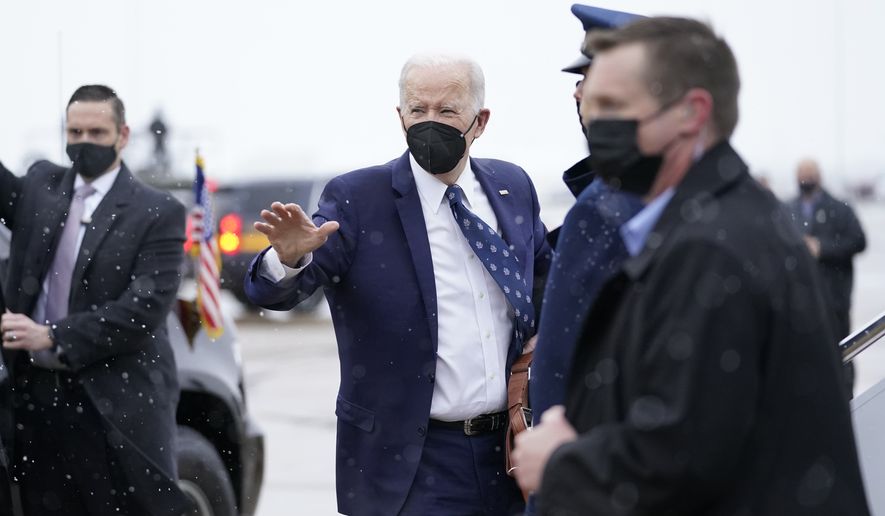President Biden’s proposal to lower consumer beef prices misses the mark on why costs have increased, the country’s largest meat industry trade group said Monday.
Sarah Little, a spokeswoman for the North American Meat Institute, said labor shortages and shutdowns of meat production facilities because of COVID-19 are the real culprits — not monopolies and price-fixing as Mr. Biden contends.
“The market has already begun to balance itself. All of the government spending announced again today is too late for consumers and producers,” Ms. Little said in an interview. “The White House is eager to announce $1billion in spending — again — on expanding meat packing capacity but has not engaged packer processors since the summer.”
President Biden is blaming the increased beef pries on anti-competitive practices in the meat industry. He accused four meatpacking companies of running a near-monopoly in the sector, saying they control 85% of beef processing, while another four firms control 54% of the nation’s poultry processing.
Mr. Biden on Monday will announce a $1 billion plan to expand independent beef, pork, and chicken processing to boost competition. The money will finance worker training and technical assistance to independent companies.
The president also wants meat producers selling their cattle to offer more information about their pricing.
SEE ALSO: Biden to promote meat-industry overhaul, hoping to rein in prices
“When dominant middlemen control so much of the supply chain, they can increase their own profits at the expense of both farmers — who make less — and consumers — who pay more,” the White House said in a fact sheet on the plan.
Ms. Little said there are still many unanswered questions about the administration’s plan, including how much the government-sponsored processors will pay employees and what the administration sees as a reasonable price for beef.
According to Bureau of Labor Statistics data, beef and veal prices have soared 20% over the past year, while pork and chicken have increased by 14% and 8.8%, respectively.
As the meat industry sees it, when the COVID-19 pandemic shut down production plants, farmers were left with nowhere to send their beef.
That resulted in culling cattle and other livestock because of uncertainty about future demand. As restaurants opened back up, consumer demand for beef increased despite less livestock, sending prices north.
“This is because packers have begun to clear the backlog of cattle created by the pandemic. The herd size is shrinking while demand remains high,” Ms. Little said.
At the same time, processing plants have been dealing with a labor shortage that has reduced their ability to process meat at the same pace as before the pandemic. That has led to a supply and demand imbalance, impacting prices.
“Labor remains the biggest challenge. Our members of all sizes cannot operate at capacity because they struggle to employ a long-term stable workforce. New capacity and expanded capacity created by the government will have the same problem,” she said.
• Jeff Mordock can be reached at jmordock@washingtontimes.com.




Please read our comment policy before commenting.